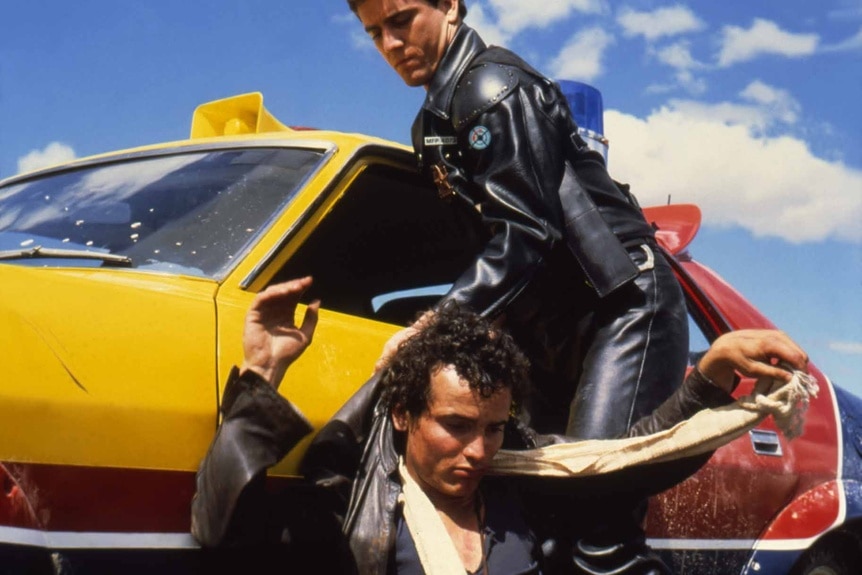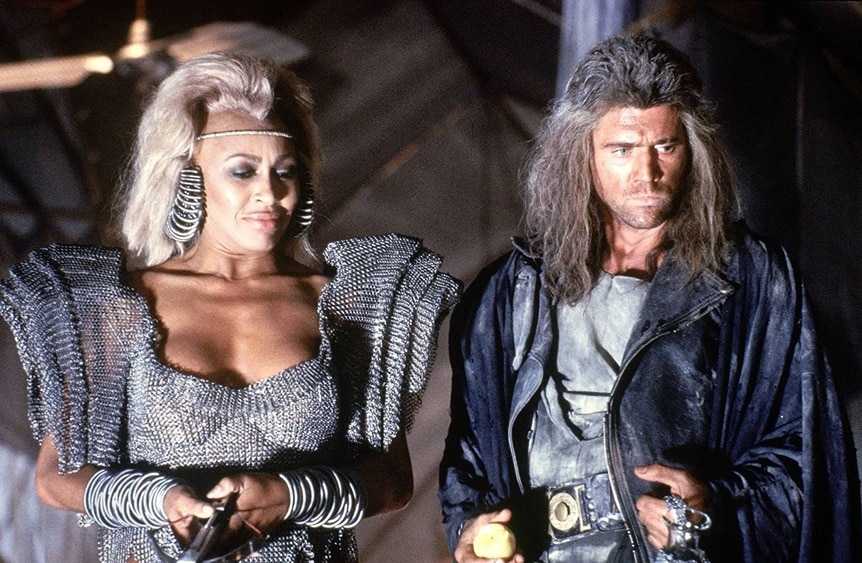Create a free profile to get unlimited access to exclusive videos, sweepstakes, and more!
How the Mad Max Franchise Has Evolved from the First Film to Now
It's been 45 years of crazy vehicles, battles, and bittersweet lessons regarding humanity in the Mad Max universe.
When cinephiles think of decades-long, on-going film franchises, most minds go to Star Wars, Jurassic Park, or even Alien. But there are plenty who forget that George Miller's Mad Max series — which helped pioneer the cinematic, post-apocalyptic genre — celebrates 45 years of existence in 2024.
This month's Furiosa: A Mad Max Saga is not a story about central character, Max Rockatansky (played by both Mel Gibson and Tom Hardy), but the back story of Imperator Furiosa (Anya Taylor-Joy). Yet the events are all connected within the universe that Miller and his writers have crafted for half a century.
With the original Mad Max film now streaming on Peacock, SYFY WIRE figured it was a good time to look at how Miller's series has evolved from a stripped down, dystopian tale of one man's revenge into a broader exploration of a world gone wild.
For More on Mad Max:
Long Before Furiosa, Mad Max Established George Miller as a Visionary in the Making
Real-life 'Mad Max: Fury Road' clashes between Tom Hardy and Charlize Theron: 'It was about survival'
Anya Taylor-Joy on finishing ‘Furiosa’: 'It’s the dirtiest and the bloodiest I have ever been’
The Evolution of George Miller's Mad Max Franchise
Mad Max (1979)
Back in the day, Miller was a doctor by profession, so he witnessed plenty of terrible fates and outcomes via his patients. Also a lover of film, Miller took a summer film school program where he met amateur filmmaker Byron Kennedy. They hit it off and together made the short film Violence in the Cinema, Part 1, which effectively turned Miller's career towards filmmaking. Eight years later, the pair (with James McCausland) wrote the screenplay for Mad Max, which was partially inspired by the global gasoline crisis that found normal people desperate to fill their cars up with petrol. The filmmakers cobbled together their own money and investor funds to get the budget together. For authenticity, they hired biker gang members for extras and an unknown American-born actor, Gibson, as their Max.
Mad Max went on to become an international sensation, making $100 million worldwide. Frankly, the reception shocked Miller, who told SYFY WIRE in a recent interview that, "The film worked mainly in the international territories. For instance, in Japan, they saw [Max] as a Samurai. In Scandinavia, they saw him as a lone Viking. In France, they said it was a Western on wheels. I was smart enough to think, 'Okay, it's nothing that I really did. Something else is happening here.' And that's when I made it my job to figure out why the first Mad Max worked when, in many ways, it had no right. Then I began to see that we hit on some universal archetype."
Mad Max 2: The Road Warrior (1981)
Considering that Mad Max was the most profitable indie film in history (until the release of The Blair Witch Project), a sequel was funded almost immediately. Miller returned to write the sequel with Terry Hayes and Brian Hannant.
"Mad Max led to Mad Max 2, a completely different tone and different story," Miller explained. "It was just the one character. But Mad Max 2 was much more deliberately mythological, let's say."
In truth, the second film was essentially Miller's do-over of Mad Max, just with a more substantial budget and more control in crafting a film that was closer to what he wanted to achieve in terms of a bleak dystopian future that had become machine centric. Gibson returned as a more hardened Max Rockatansky who essentially goes up against a major masked villain named Lord Humungus (Kjell Nilsson). Miller also uses a narrator — The Feral Kid — to convey Max's story in this film, which gives it a folklore and story-like feel that distinguishes it from the first film. It sets up Max as a hero archetype, whose story is passed down from survivor to survivor.
Mad Max Beyond Thunderdome (1985)
The slickest and most cinematically mature of the first three Mad Max films, Mad Max Beyond Thunderdome sets the visual standards that Miller would continue to explore and expand upon, going forward in the franchise. Max (Gibson) comes across the organized civilization known as Bartertown, created and ruled over by Aunty Entity (Tina Turner). She enlists Max's help to take down a rival leader, Master Blaster. In exchange, she'll fully resupply his car, fuel, and food to continue his nomadic journey. Unintentionally during his travels, Max finds a group of children in the Wasteland and helps them relocate to a safer existence. He leaves them to begin their new future and he again becomes known as a legend to those he leaves behind.
Mad Max: Fury Road (2015)
After a 30-year break, Miller returned to his dystopian world with Mad Max: Fury Road. With a screenplay written alongside Brendan McCarthy and Nico Lathouris, Miller developed the film from 1987 through to early 2011, but was delayed due to other films he ended up directing as well as funding issues. Max was recast with Hardy playing the loner of the Wastelands, while Charlize Theron was added into the mythology as Imperator Furiosa, a "War Rig" driver who has a hidden agenda that brings her and Max together.
Despite horrific tales of the myriad difficulties plaguing the production of this installment, Miller's ambition and vision for this world was finally achieved at a scale untouched in the other films. Utilizing incredibly complex physical stunts, filming techniques, action choreography, and pyro, Fury Road was by far Miller's most visceral representation of this landscape. Shot in Africa over the span of a year with principle production and reshoots, Miller left the comforts of Australia for the first time in the series.
"What Namibia offered was relative locations that were contiguous with each other," Miller said of having to leave a wet Australian landscape for dry Africa. "The story of Fury Road happened over three days and two nights and it's basically on the run. It's very linear so Namibia offered the locations that worked best."
The film was also a bit of a fake out in that while Max is present through the story, he is mostly reactive and an observer of Furiosa's revealed mutiny/escape from the villain warlord, Immortan Joe (Hugh Keays-Byrne). It's only more than halfway through the film that Max becomes a purposeful ally to Furiosa and her precious cargo, as they seek out the mythical "Green Place." Furiosa and Max's intertwined paths of redemption are a major departure from how Miller previously told his Mad Max narratives, but it invigorated the series in a monumentally impressive way.
Furiosa: A Mad Max Saga (2024)
Just shy of a decade later, Miller has returned with Furiosa: A Mad Max Saga. It is the first film in the franchise not to be Mad Max-centered. Instead, it tells Furiosa's (Taylor-Joy) back story from childhood to young womanhood. It was actually written before Fury Road. Miller and Nico Lathouris crafted the screenplay in tandem with their Fury Road script to have a detailed origin story for Charlize Theron to read as she prepped her performance as Furiosa.
Taking place over two decades, Furiosa's journey to get to Immortan Joe's Citadel as one of his "War Rig" drivers is its own folktale of endurance and defiance in the face of oppressors who keep her from her beloved family in the "Green Place." In Furiosa, we meet the people who helped her become the warrior we see in her adulthood, and what keeps her hope from wilting in the face of terrible men and the dangers of the Wasteland.
Stream Mad Max on Peacock here! And for more dystopian road tales, check out the first season of Twisted Metal here.





















